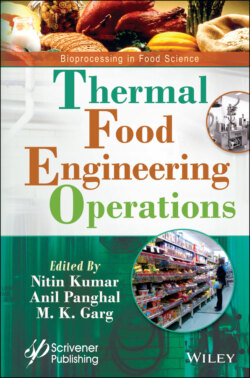Читать книгу Thermal Food Engineering Operations - NITIN KUMAR - Страница 49
2.6.2.2 Application for Inactivation in Food Sector
ОглавлениеLog reduction of E. coli, Shigella, and Salmonella present in black pepper were studied by [64] which programmed for 2 min at 50 °C with a power level of 800W. These three-microorganism got reduced to a log cycle of 6 which would hold up to 3 mins with a sample thickness of 3cm. Microwave treatment was performed on infant formula powder targeting Cronobacter sakazakii studied by [65]. At 800 and 900W the log reduction 5 log cycle. [66] currently studied the inactivation rate of Aspergillus niger present in garlic which resulted in reduction varying between 1.12 and 1.16 at a microwable temperature of 50 °C. This experiment was conducted using a microwave drum dryer using Weibull, Page, and Bigelow models. Therefore, this model proved to be perfectly fitted to predict the reduction rate of inactivation of Aspergillus niger. From all the above case studies it was inferred that treating the food products with microwave proves to be promising for a wide range of products on an industrial scale as it maintains the quality and preserves the nutritional aspects of the products. Though there are studies with different vegetables, more research has to be conducted to verify the exact nature retained at the end of the experiment for various other food powder products and which could be done on a wider scale level.
